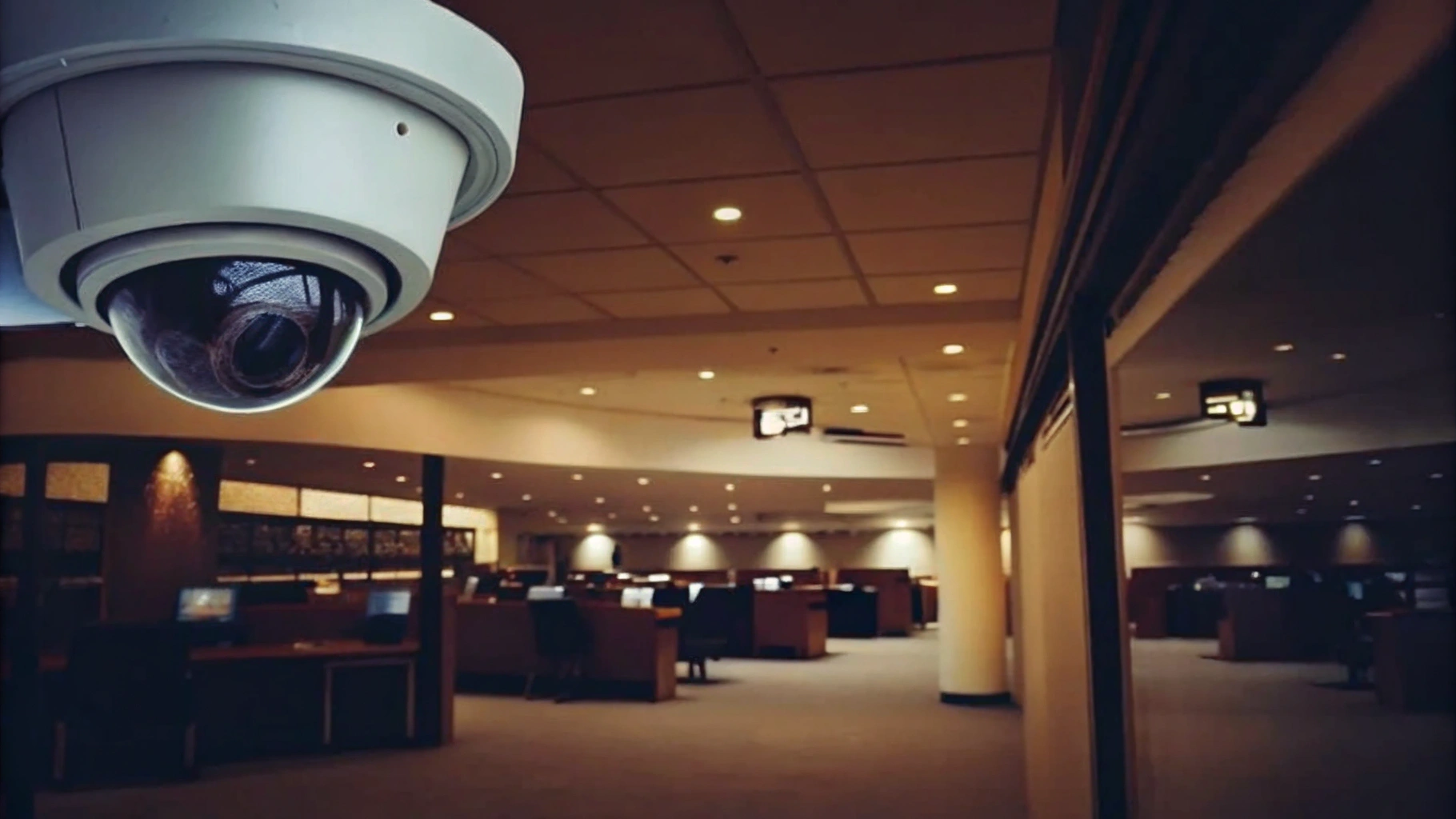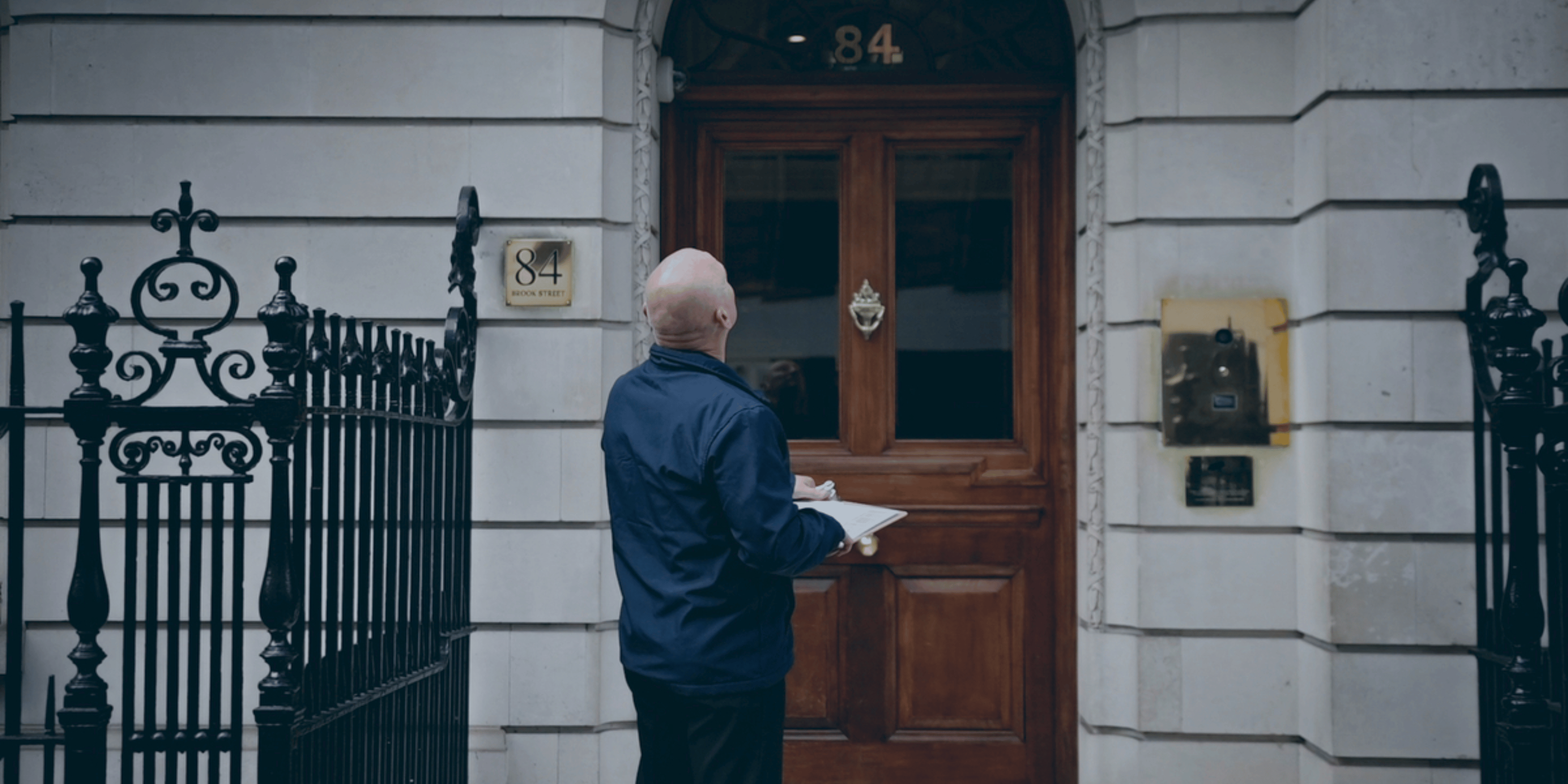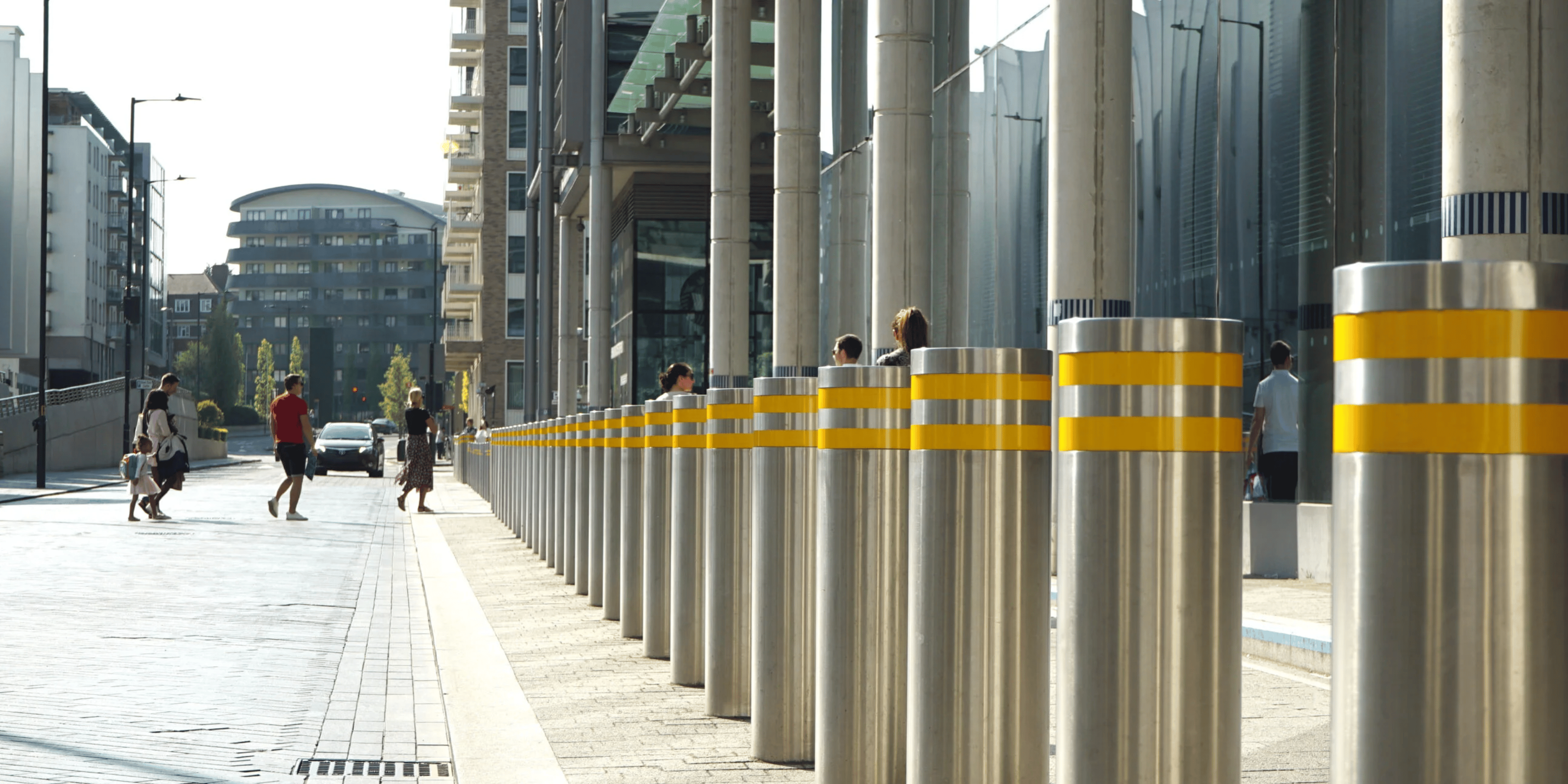
Master Office CCTV Installation: A Step-by-Step Guide for Managers

Overview
The article presents a clear, evidence-based guide for managers on the effective installation of CCTV systems within office environments. Surveillance plays a critical role in bolstering security and safety, a fact that cannot be understated. It highlights essential considerations for:
- Planning the installation
- Executing the setup
- Maintaining the system
All supported by data demonstrating CCTV's effectiveness in reducing crime and enhancing workplace safety. Ignoring these security measures can lead to significant financial, operational, and reputational risks for businesses. Therefore, implementing a robust CCTV system is not merely an operational choice; it is a strategic investment in business continuity.
Introduction
In today's business landscape, workplace safety is not just a priority; it is essential for operational continuity. Effective surveillance systems have emerged as a critical component of security strategies, particularly in office environments. Managers must navigate the complexities of various CCTV systems, installation, and maintenance to create a secure atmosphere. Ignoring these security measures can lead to significant financial, operational, and reputational risks.
This guide serves as a comprehensive roadmap for mastering office CCTV installation, detailing essential considerations, step-by-step procedures, and best practises to optimise security measures.
How can organisations effectively integrate these systems to protect their assets and cultivate a culture of safety in the workplace? The lesson is clear: early investment in security systems is a proactive step towards preventing greater losses in the future.
Understand CCTV Systems and Their Importance in Office Security
Surveillance cameras, integral to office security, are a key aspect of office CCTV installation. They provide live monitoring and recording capabilities that significantly deter criminal activity while enhancing overall safety. These systems serve multiple purposes, including overseeing employee safety, preventing theft, and ensuring compliance with safety regulations. Understanding the —such as analogue, IP, and wireless—enables businesses to choose the most suitable office CCTV installation for their environment.
At Priority First, we integrate our CCTV monitoring services with your existing security frameworks, including major CCTV, access control, and alarm systems. This approach ensures minimal disruption during implementation while bolstering your current setup. Strategic equipment positioning is crucial for maximising the effectiveness of your security measures. By placing cameras at entry points, high-value areas, and communal spaces, you not only enhance coverage but also reduce blind spots. Research indicates that surveillance cameras can lead to a 51% reduction in vehicle crime in monitored areas, underscoring their potential impact on theft prevention. Moreover, our 24/7 monitoring service facilitates immediate incident responses, thereby improving employee safety and fostering a secure workplace environment.
Incorporating advanced technologies, such as AI-driven analytics, can further optimise surveillance systems. These innovations enable proactive monitoring and swift identification of suspicious activities, thereby reinforcing the protective framework within corporate settings. As organisations increasingly recognise the significance of office CCTV installation, it becomes vital to integrate these systems into security strategies for protecting assets and ensuring a safe work environment. Additionally, understanding the role of Hostile Vehicle Mitigation (HVM) within a comprehensive security strategy is essential for safeguarding your premises against potential vehicle threats.

Plan Your CCTV Installation: Key Considerations and Preparations
Before the office CCTV installation, it is essential to conduct a thorough assessment of your office layout to identify critical areas needing surveillance. Key factors to consider include:
- Lighting conditions
- Potential obstructions
- Specific risks your office may face
Engaging a from Priority First can provide invaluable insights, including tailored risk evaluations and personalised protection strategies that enhance overall safety. A comprehensive strategy for office CCTV installation should outline:
- The quantity of devices required
- Their types
- Optimal installation sites to ensure alignment with your business objectives
Additionally, it is vital to have the necessary tools and equipment, such as:
- Mounting brackets
- Cables
- A reliable power supply
Compliance with local regulations regarding surveillance is also advisable, with Priority First available to assist you in navigating these requirements. By utilising Priority First's [advanced CCTV monitoring solutions](https://priorityfirst.co.uk/insights/10-benefits-of-cctv-remote-monitoring-for-construction-site-security)—featuring night vision, motion detection, and remote access—you can refine your installation strategy and ensure comprehensive security coverage.

Execute the Installation: Step-by-Step Process for Setting Up CCTV
- Gather Your Equipment: Begin by collecting essential tools such as recording devices, cables, connectors, and a monitor for viewing footage. It is vital to select the appropriate type of devices for your needs, including dome or bullet styles, which typically range from £120 to £190 for DVR systems.
- Install the Devices: Following your pre-established plan, securely install the devices in designated locations. Position them effectively to cover the intended areas, avoiding obstructions that could hinder visibility. Proper placement is crucial for optimal monitoring in [office CCTV installation](https://priorityfirst.co.uk/insights/10-benefits-of-monitored-cctv-for-construction-site-security), as it directly impacts the effectiveness of security.
- Connect the Devices: Run cables from each unit to the recording equipment or network switch. For wireless systems, adhere to the manufacturer's instructions for connecting to the Wi-Fi network. It is essential to ensure that the installation of office CCTV complies with any necessary building regulations, particularly if wiring into a consumer unit.
- Power Up: Connect the devices to a power source. If utilizing Power over Ethernet (PoE) devices, confirm that your network switch supports this feature to facilitate installation.
- Configure the Setup: Access the CCTV software to adjust settings such as recording schedules, motion detection, and alerts. Ensure that the devices are accurately aligned and focused on their intended areas during office CCTV installation to maximize coverage, which is key to effective surveillance.
- Evaluate the Setup: Conduct a thorough examination of the complete setup to verify that all devices are operating properly and that recordings are being captured as anticipated. Adjust camera angles and settings as necessary to enhance performance. This testing phase is essential to ensure that the office CCTV installation .

Maintain and Optimize Your CCTV System for Long-Term Security
To ensure your office CCTV installation operates effectively over the long term, establishing a consistent maintenance timetable is essential. This schedule should include several key components:
- Routine Checks: Regular inspections of cameras are vital to identify any physical damage or obstructions that could hinder functionality. Maintaining clean lenses and ensuring housing integrity are crucial for preserving clear video quality.
- Software Updates: Updating the CCTV setup's software regularly allows you to take advantage of the latest features and security patches. This proactive approach helps protect against vulnerabilities and enhances overall performance.
- Storage Management: Diligently monitoring storage capacity and managing recorded footage by deleting unnecessary files is essential. This practise ensures that the infrastructure operates smoothly and that critical footage remains accessible when needed.
- Performance Review: Periodically reviewing recorded footage is necessary to assess the effectiveness of camera placements. Adjustments may be required to optimise coverage and ensure that all critical areas are monitored adequately.
- Training Personnel: Providing training for relevant staff on operating the surveillance system and responding to alerts within the office and ensures a swift response to potential incidents.
Implementing these routine checks not only extends the lifespan of your office CCTV installation but also significantly boosts the performance of the system. Research indicates that well-maintained setups can reduce the risk of equipment failure and downtime, ultimately offering better protection for your assets. By prioritising regular maintenance, you can guarantee that your office CCTV installation remains robust and effective against evolving threats.
Moreover, with the UK crime rate standing at 87 reports per 1000 individuals, maintaining a reliable surveillance network is more crucial than ever. Studies show that the presence of surveillance cameras can lead to a reduction in crime rates by up to 25% in monitored areas. Priority First's extensive experience in CCTV maintenance underscores the importance of regular upkeep, ensuring systems comply with legal and insurance requirements. Our 24/7 monitoring services further enhance safety, allowing for prompt reactions to any incidents. As Kyla Keating, a Marketing Executive at ClearView Communications, states, "Investing in regular maintenance is a small price to pay for the safety and security of assets and loved ones.

Conclusion
Implementing an effective office CCTV installation is crucial for enhancing workplace security and ensuring employee safety. Surveillance systems play a significant role in creating a comprehensive protective environment when integrated strategically into existing security frameworks. The journey from planning to execution necessitates careful consideration of layout, equipment selection, and compliance with regulations, all of which are vital for a successful installation.
Key insights from this guide highlight the importance of thorough preparation, including:
- Assessing potential risks
- Determining optimal camera placements
The outlined step-by-step process ensures that managers can confidently navigate the installation, from gathering necessary tools to configuring the system for maximum effectiveness. Ongoing maintenance and performance reviews are essential for sustaining the reliability and functionality of the CCTV system, ultimately safeguarding assets and fostering a secure workplace.
In light of rising security concerns, prioritising a robust CCTV installation and maintenance strategy is paramount. Statistics reveal that a well-maintained surveillance system not only deters crime but also cultivates a culture of safety within the organisation. By embracing these practises and investing in the right technologies, businesses can protect their assets and create a safer environment for employees. Taking action now to implement these strategies ensures that office security is not merely a reactive measure but a proactive commitment to safety and well-being.
Frequently Asked Questions
What is the primary function of CCTV systems in office security?
CCTV systems provide live monitoring and recording capabilities that deter criminal activity, enhance overall safety, oversee employee safety, prevent theft, and ensure compliance with safety regulations.
What types of surveillance systems are available for office CCTV installation?
The main types of surveillance systems include analogue, IP, and wireless systems, each offering different features suitable for various environments.
How does Priority First integrate CCTV monitoring with existing security frameworks?
Priority First integrates CCTV monitoring services with existing security frameworks, including major CCTV, access control, and alarm systems, ensuring minimal disruption during implementation while enhancing the overall security setup.
Why is strategic equipment positioning important in CCTV installation?
Strategic equipment positioning is crucial for maximising the effectiveness of security measures by enhancing coverage, reducing blind spots, and ensuring that cameras are placed at entry points, high-value areas, and communal spaces.
What impact do surveillance cameras have on crime prevention?
Research indicates that surveillance cameras can lead to a 51% reduction in vehicle crime in monitored areas, highlighting their effectiveness in theft prevention.
How does 24/7 monitoring improve employee safety?
The 24/7 monitoring service facilitates immediate incident responses, thereby improving employee safety and fostering a secure workplace environment.
What advanced technologies can enhance surveillance systems?
Incorporating advanced technologies, such as AI-driven analytics, can optimise surveillance systems by enabling proactive monitoring and swift identification of suspicious activities.
Why is it important to integrate CCTV systems into security strategies?
Integrating CCTV systems into security strategies is vital for protecting assets and ensuring a safe work environment as organisations increasingly recognise their significance.
What role does Hostile Vehicle Mitigation (HVM) play in office security?
Understanding the role of Hostile Vehicle Mitigation (HVM) is essential for safeguarding premises against potential vehicle threats as part of a comprehensive security strategy.




